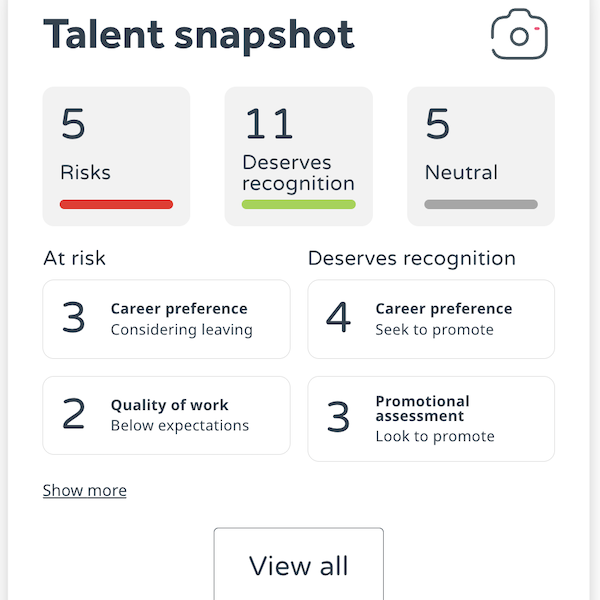Employee retention is a crucial aspect of any business. But retention is more than just keeping employees on the job; it is about creating an environment that fosters growth, development, and job satisfaction. There are many benefits and challenges surrounding employee retention, however, some of these strategies can help organisations to enhance their employee retention levels.
Definition of Employee Retention
Employee retention is the practice of keeping employees for a prolonged period of time. It is often associated with creating an environment that enables job satisfaction, employee engagement, and opportunities for personal and professional development. Retention is not just about keeping employee turnover levels low; it is about developing and nurturing talents for long-term success.
The Benefits of Employee Retention
Employee retention has many benefits for both employees and businesses. For employees, retention means job security, stability, and opportunities for growth and development. Importantly, it also provides a sense of belonging, community, and connection to their workplace.
On the other hand, companies benefit from employee retention in terms of increased productivity, higher employee morale, and improved company culture. Additionally, companies save on recruitment, onboarding and training. The time, effort and budget spent on replacing an employee must not be underestimated – the loss of top talent can be hugely detrimental.
Research carried out by Oxford Economics found that it takes recently hired professional workers 28 weeks to reach optimum productivity – which has an attached cost of £25,200 per employee. And that is based on the assumption that you can find the right person to replace the lost employee.
Common Challenges to Employee Retention
One of the common challenges to employee retention is the need for more development opportunities. Employees who feel that they are not growing and developing in their jobs are more likely to leave.
Another challenge is the lack of communication, feedback, and recognition from managers. When employees feel that their efforts are not appreciated, they are more likely to look for other opportunities.
Additionally, poor company culture, a perceived lack of trust and respect, and low compensation and benefits are other reasons why employees may leave.
Strategies for Enhancing Employee Retention
There are a few strategies that companies can implement to enhance employee retention.
Firstly, companies should provide development opportunities such as training and mentorship programs. For example, providing junior employees with the opportunity to shadow senior employees or a professional development budget every quarter. This will enable your people to learn new skills and grow in their careers, plus create more valuable, productive team members.
Another approach is ensuring your business encourages communication, feedback, and recognition from managers. Employees should feel that their efforts are appreciated, and their opinions matter. This can be done with regular 1:1s and quality conversations (learn more about our intelligendas).
Companies should also create a positive company culture that fosters trust, respect, and inclusivity. The most effective strategy to identify areas for improvement is with an engagement, wellbeing or D&I survey. WeThrive’s intelligent surveys provide simple, easy-to-follow recommendations and action plans to tell HR, managers and employees exactly what to do next.
Lastly, despite studies showing that engagement, wellbeing and job satisfaction are far more effective at retaining employees, companies should ensure their people are satisfied with their compensation and benefits package.
Measuring Employee Retention Rates
Measuring employee retention rates is essential for companies to assess their success in retaining employees. The retention rate is the percentage of employees who remain with the company for a measured period.
Companies should track retention rates regularly and identify any trends or patterns that may impact retention. For example, analysing high levels of employee turnover alongside engagement survey results or performance reviews.
WeThrive’s CEO dashboard provides a retention risk report that indicates when employees may be thinking about leaving, so you can take action.
The Impact of Employee Retention on Company Culture
Employee retention has a significant impact on company culture. High levels of employee turnover can be very demoralising and can lead to a toxic work environment where staff are less productive and feel at odds with their company culture.

Increasing face-to-face opportunities, such as coffee hours or Zoom drop-ins, and creating ‘buddy systems’ for new employees or team away days are all effective ways to support your employee retention strategy and help build friendships at work.
The Role of Leadership in Employee Retention
Many of us have heard the phrase “People leave managers, not companies”, and its true, leadership plays a crucial role in employee retention. Managers must create a positive work environment that fosters trust, respect, and open communication. They should provide development opportunities and recognise and reward employees for their efforts. This could be as small as a thank-you card or sharing their team members’ success stories in the monthly newsletter or Slack channel.
Leaders should also be transparent and provide regular feedback to employees. 1:1 meetings and performance reviews should be utilised to check-in with their team members. WeThrive Perform makes this simple, using our completely customisable Intelligendas®️. Employees who feel that their leaders care about their progress and are invested in their professional development are more likely to stay with the company.
The Role of Employee Engagement in Employee Retention
Employee engagement is a critical factor in employee retention. Engaged employees are passionate about their work, committed to the company’s goals, and willing to go above and beyond to achieve them.
However, it can be hugely challenging to identify exactly what each individual needs to feel engaged at work. WeThrive’s intelligent employee engagement survey’s are designed to uncover the causes of low motivation, engagement and performance.
WeThrive’s 4C model examines the 16 key areas of engagement. Learn more about how your managers can improve employee engagement here.
The Role of Compensation in Employee Retention
Compensation and benefits play a role in employee retention, however, strong compensation and benefits packages alone are not enough to retain top talent. While compensation should be fair and reflect the market rates, and benefits should be comprehensive and tailored to the needs of employees, it is crucial that employees still feel connected to the business, valued by leadership and satisfied in their role.
Some benefits that could be considered are incentives such as bonuses, profit-sharing, and stock options to reward and retain high-performing employees.
Employee Retention Best Practices
Here are some best practices for enhancing employee retention:
- Provide development opportunities such as training, mentorship, and coaching programs.
- Encourage communication, feedback, and recognition from managers with quality 1:1 conversations.
- Create a positive company culture that fosters trust, respect, and inclusivity using intelligent surveys with actionable outcomes.
- Provide competitive compensation and benefits packages to attract and retain key players and top talent.
Offer incentives such as bonuses, profit-sharing, and stock options to reward and retain high-performing employees. - Encourage employee engagement by addressing your people’s individual needs.
- Foster a sense of community and belonging by organising social and team-building events and volunteer activities that your people will enjoy.
Employee retention is crucial for the long-term success of any business. If you want to discover how WeThrive can support your employee retention strategy book a demo or learn more in our white paper: How to protect your business from “The Great Resignation”.




